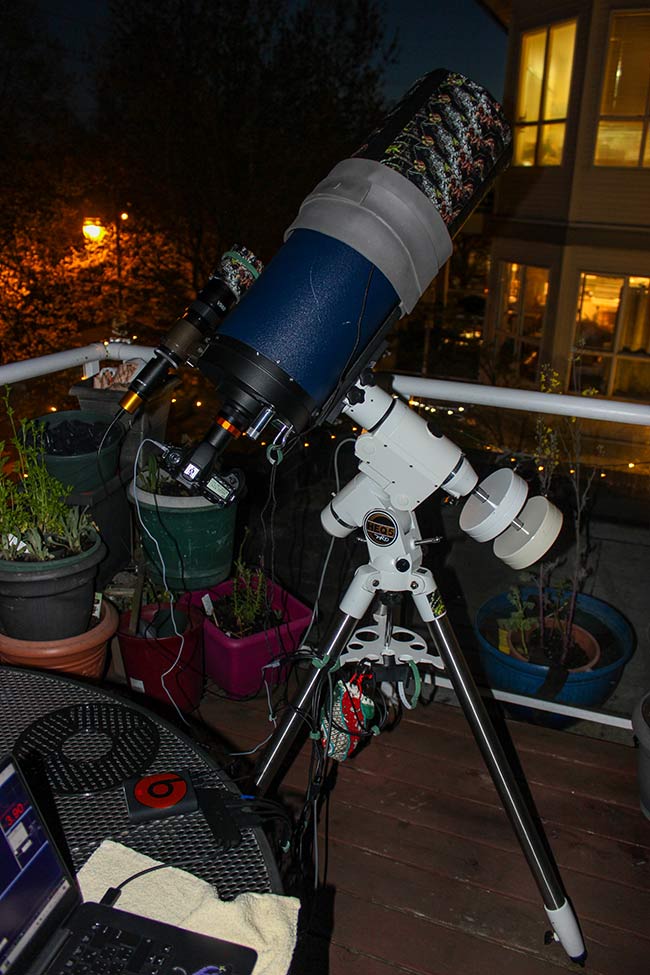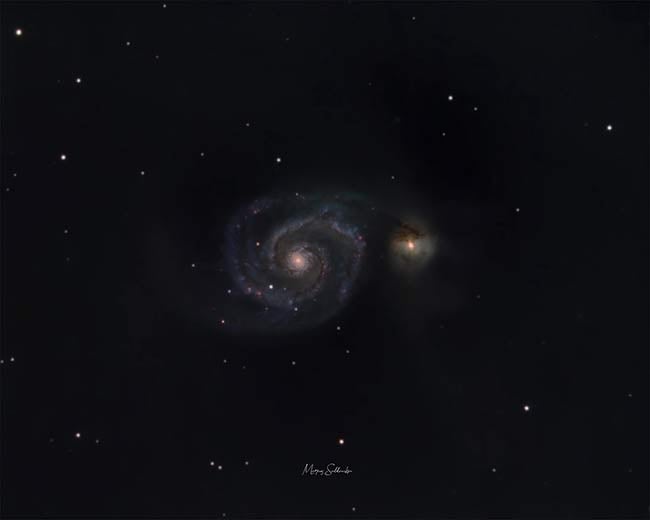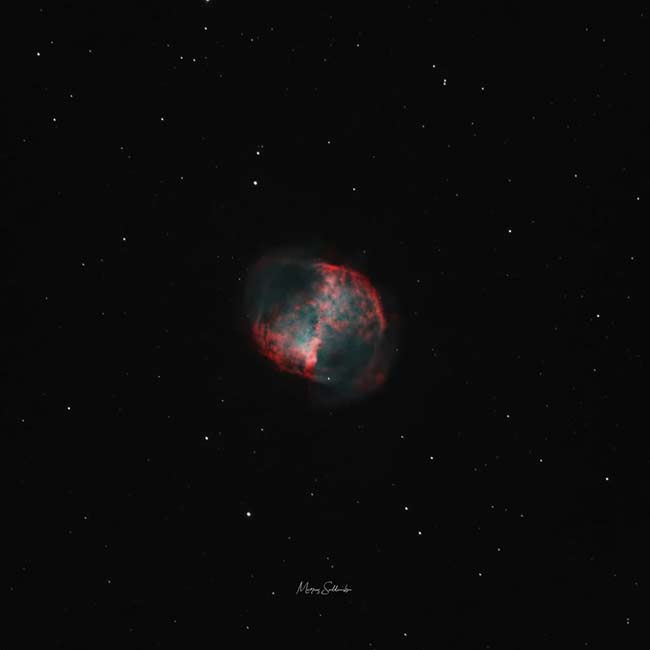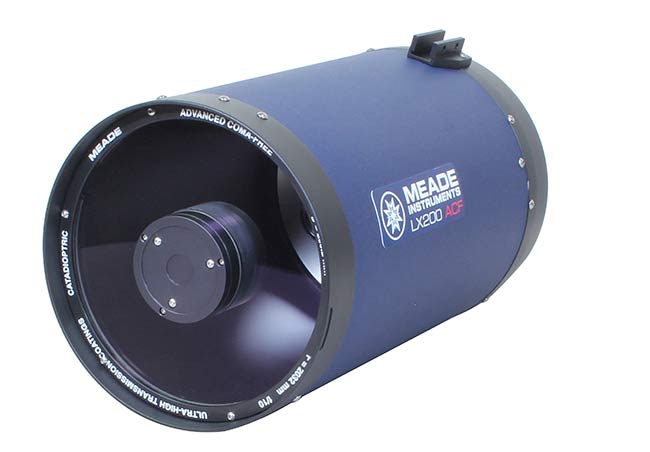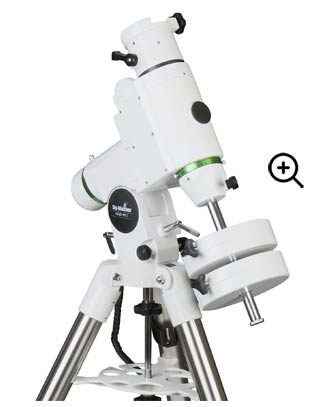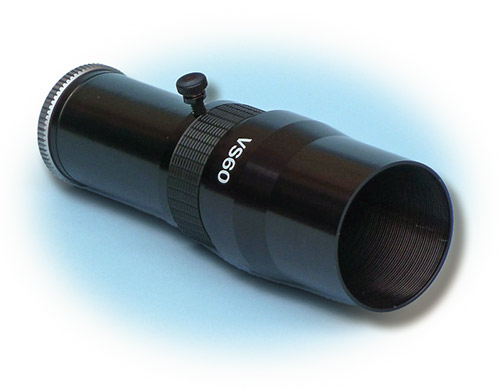Backyard of the Week | September 27, 2021
The AstroBackyard Backyard of the Week highlights astrophotography setups from around the world. A “backyard” can be a balcony, driveway, garden, or wherever else you set up astrophotography equipment at home.
By taking a behind-the-scenes look at the equipment amateur astrophotographers use to take deep-sky images, you can get a better understanding of the process.
This week’s backyard astrophotography equipment profile comes to us from Marcus Saldanha in Canada.
Location: Vancouver, Canada
Marcus Saldanha
Marcus uses an astro-modified Canon DSLR to photograph galaxies, nebulae, and more through his 8″ Meade SCT. His telescope provides 2000mm of focal length to work with, but he speeds this system up 0.63X Celestron reducer lens.
The assorted pieces of gear that make up Marcus’ complete imaging system lead me to believe he purchased many of the items second-hand. This is precisely how I managed to put together an affordable deep-sky imaging rig my first time around as well.
Whirlpool Galaxy by Marcus
I have a soft spot for those setting up their gear on a balcony. On one hand, you have the advantage of elevation and a low view of the horizon, on the other, a large portion of the sky is completely obstructed.
However, astrophotography can still be enjoyed in a scenario like this, you just have to get a little creative with your setup and alignment routine. Marcus has clearly mastered this process and has completed an impressive number of astrophotography projects from his home.
Marcus’s Equipment
| Primary Imaging Camera | Canon EOS 60D (astro-modified) |
| Primary Telescope | Meade 8" SCT |
| Mount | Sky-Watcher HEQ5 |
| Filters | 1.25' Astronomik 12nm Ha + Lumicon UHC + Clip-in Svbony UHC |
| Guide Scope | Antares VersaScope 60 |
| Guide Camera | ToupCam GCMOS 1200 KMB |
| Dew Control | DIY Dew Shield and COOWOO Dew Heaters |
| Camera Control Software | Astro Photography Tool, PHD2 Guiding |
What does Marcus love most about his gear?
“Very versatile as it lets me search the night sky at a measly ~1300mm (F/6.3); Perfect for small galaxies and getting that fine detail in nebulae. Also, I can easily set it and forget it as Astro Photography Tool runs my imaging plan while I enjoy the warmth of my bed.”
The Camera
The Canon EOS 60D is a capable camera for astrophotography, with several traits that come in very handy for photographing the night sky. Marcus’ 60D, is astro-modded, essentially turning it into a Canon 60Da.
The camera includes a flip-out display screen, which makes tasks like focusing and framing your target easier. The 5X-10X live view video mode is a life-saver, and noise levels in the ISO 800 – 1600 range are respectable.
Thanks to an after-market full-spectrum modification, this camera can record detailed images of nebulae emitting light in the H-Alpha bandpass.
Canon EOS 60D (modified)
The Filters
Marcus uses a mix of broadband and narrowband filters to photograph deep-sky objects. For broadband, full-color images a Lumicon UHC or Svbony UHC clip-in filter is used.
When the moon is out, or serious narrowband h-alpha details are needed, Marcus uses an Astronomik 12nm Ha filter. A combination of light pollution filters and narrow bandpass filters (specially Hydrogen-Alpha) can help create dynamic images of nebulae and galaxies from the city.
Astronomik 12nm Ha Filter
Dumbell Nebula by Marcus Saldanha
The Telescope
Marcus uses a Meade 8″ SCT to capture distant objects in space from his backyard. Thanks to its large aperture and long focal length, this telescope is capable of pulling smaller galaxies in for a closer look.
The native 2000mm focal length is great for small galaxies and photographing planets. For a wider field of view and faster light gathering ability, a Celestron 0.63X reducer is used.
Meade 8″ LX200-ACF f/10
- Type: Schmidt Cassegrain Telescope
- Diameter: 200mm
- Focal Length: 2000mm
- Focal Ratio: f/10
- Weight: 17 lbs (7.7 kg)
Meade 8″ SCT
The Telescope Mount
Marcus uses a Sky-Watcher HEQ5 Pro computerized GoTo telescope mount to run his imaging sessions. The telescope mount is connected to his computer, so he can leverage tools such as plate-solving via Astro Photography Tool.
The HEQ5 Pro has a maximum payload capacity of 30 pounds, which is enough for Marcus’ 8″ SCT, camera, and a small autoguiding system. This telescope mount has been around for years, and HEQ5 owners continue to enjoy reliable tracking and impressive performance for the price.
Sky-Watcher HEQ5
The Guide Scope
The Antares VS60 “VersaScope” is a finder scope/guide scope with a diameter of 60mm. It has a focal length of 227mm at F/3.78, making it a suitable guide scope for most refractor telescopes as well as longer focal lengths OTA’s such as Marcus’ 8″ SCT.
I haven’t seen too many of these bay boys, but they still come up from time to time on the astronomy classified sites.
Antares VersaScope 60 Guide Scope.
The Guide Camera
This one is a first for Backyard of the Week. Marcus uses a ToupCam GCMOS series guide camera to improve the tracking accuracy of his telescope mount via autoguiding.
It’s a simple 1.2 MP monochrome CMOS camera with a built-in ST4 autoguiding port and a USB 2.0 connection. The camera is ASCOM compatible, meaning it will work with PHD2 Guiding and APT to make guide corrections and dither between exposures.
ToupCam GCMOS01200KMB
Thank you for sharing your backyard astrophotography set up with us, Marcus! You can view his astrophotography on Instagram.
Be sure to fill out the form to submit your backyard for a chance to be featured, and don’t forget to include your Instagram handle to help grow your following.
View the Backyard of the Week Archives
